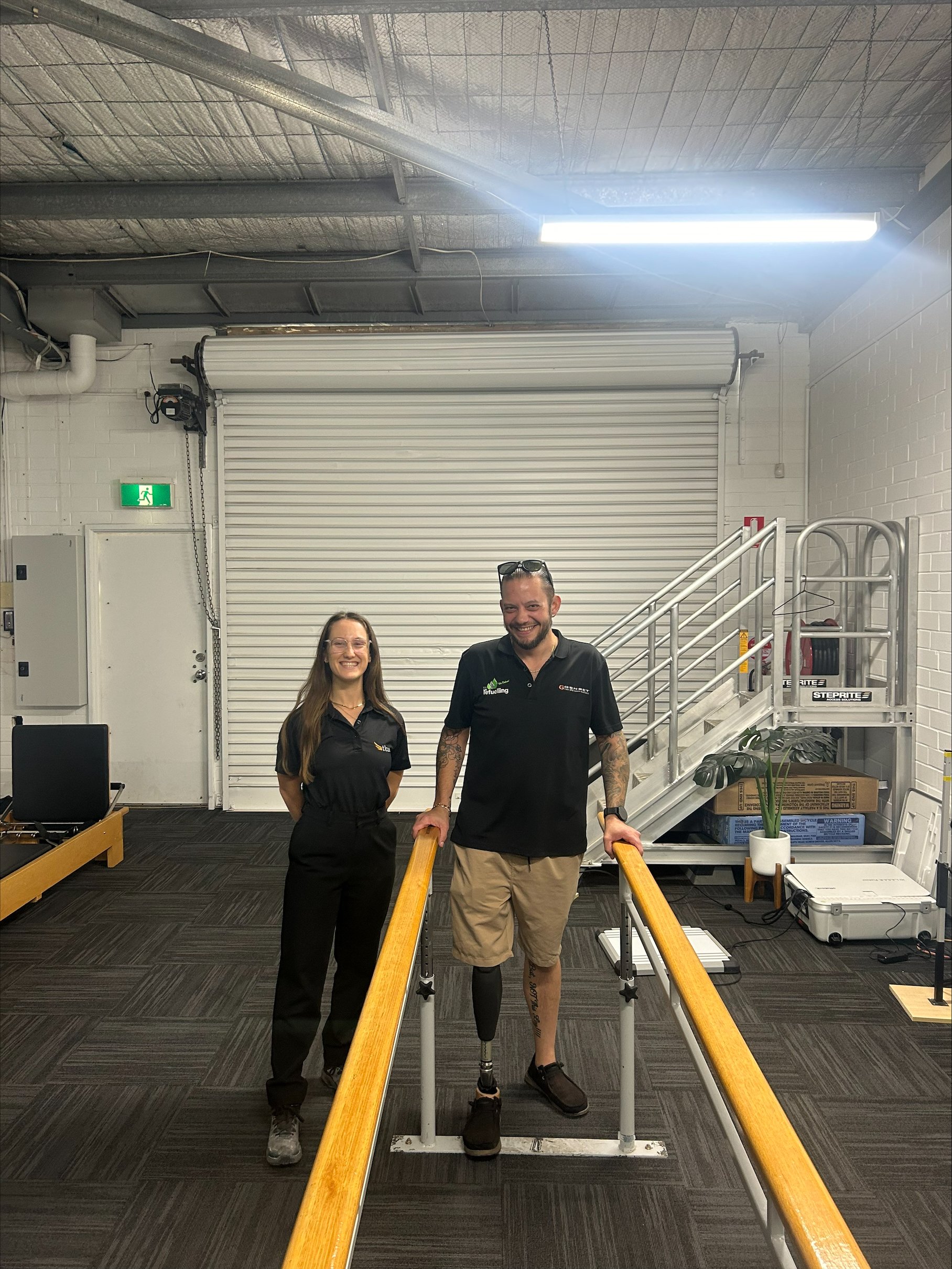Parallel journeys for the early career practitioner
Not everyone enters the clinical world of prosthetics at the same time as their client – Kayla shares her experience of what this parallel journey looks like, and what she has learnt.
Can you tell us about your path to becoming an early career practitioner?
I graduated from the University of Sunshine Coast at the end of 2022. During my studies, I did a placement here at TLCU, and I also had the opportunity to gain experience in New Zealand. While I was there, I received a job offer to move back to Perth, which I did in February the following year. Since then, I’ve been working with lower limb amputations, focusing on both NDIS clients and those in the public system. Our main population is primarily transtibial amputees, but I’ve also worked with everything from hemi-pelvic amputations to partial feet. It’s been an amazing experience.
Is there a case study that sticks in mind for you? Why?
it’s rare in the private system to follow someone from the very beginning, but I was fortunate to have that opportunity with one particular client. We got him on the rental program for the Kenevo, which was the first time we had implemented that here in WA. I was able to see him for his initial consult, make his first prosthesis, and work with him all the way through to last week, when he got the Genium X4. That’s a pretty exciting journey, and it was a special experience for me since it was early on in my career.
Early on, it’s hard to know the right thing to say, especially in the first consult. There’s a lot of imposter syndrome, and it’s challenging to feel confident when a client asks you a question you don’t have an immediate answer to. I think that’s something all early career practitioners experience. You question yourself: “Do I know enough? Can I handle this?” But with this client, I was lucky. He trusted me completely and was willing to go with whatever I suggested, which was a huge help.
A standout moment for me was when I got the chance to talk to Ottobock about getting a microprocessor knee into the rehab space. I was so excited because I had a client who would benefit from it, and I thought, “This is going to be amazing for him.” It was a big moment for me in terms of what I could offer to the client’s rehabilitation.
Were there any challenges or moments when you had to adjust your approach?
One of the ongoing challenges is gait training. As much as you want everything to be perfect, sometimes it just isn’t possible, especially when a client has pre-existing conditions or weaknesses. For example, with this client, his gait was affected by the years of pain and limited mobility before his amputation. It was a tough reality to face, knowing that, despite our best efforts, we couldn’t achieve the ideal gait. But I think being realistic and setting achievable goals is key in these situations. In the beginning, I focused a lot on tweaking the prosthesis in every possible way, but that sometimes made things worse. Now, I rely on my team more and trust that if I’m unsure about something, they can help.
Can you briefly take us through your client’s clinical presentation when you first met him, then during the trialling of the Kenevo, and where he is now?
When I first met him, he had a history of chronic pain due to a condition called Pigmented Villonodular Synovitis (PVNS), a tumor behind his knee. He was using his leg almost like a locked knee, unable to walk properly. After years of dealing with this, he opted for a transfemoral amputation. He was in his late 30s, a very active guy who wanted to get back to work and his hobbies as soon as possible.
We started him on an interim prosthesis, and within two weeks, he was already trialling the Kenevo. His goal was to get back to being outdoors, camping, and just living an active lifestyle. Initially, I thought he’d be a candidate for the Genium X3, but with the rental program for the Kenevo, he could get started on rehab much sooner than we’d anticipated. We worked closely with physios, and by the time we finished the rehab with the Kenevo, he was ready for the Genium X4, which is where he is now. It was a fantastic experience, and he’s made great progress.
do you have any recommendations for early career practitioners and for senior practitioners on how they can work together effectively?
For senior practitioners, I think it’s important to sit down with early career practitioners early on and discuss how they learn best and how they’d like to approach their work. Everyone has a different learning style, so understanding that upfront can make a big difference.
For early career practitioners, it’s crucial to remember that there’s no such thing as a silly question. You’ve gone to university, and you know what you’re doing, but if you’re ever unsure, just ask for help. People are there to support you, and everyone has been in your shoes at some point.



